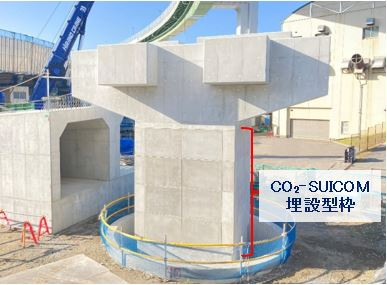J-STORIES ― 実際の情景にデジタルグラフィックスを重ね合わせ、目の前の世界を仮想的に拡張するAR(Augmented Reality、拡張現実)技術。娯楽やビジネスなどへの活用だけでなく、その仮想空間では人々が現実の物理的な制約や格差を超えて共につながる、という効果も期待できる。
そうしたARの機能や特徴を教育に活用しようと、芝浦工業大学(東京都港区)は今年4月から、日本の大学としては初めて、ARスポーツの「HADO」を体育科目の授業に導入する。「HADO」を提供するのはベンチャー企業のmeleap(本社:東京都港区、福田 浩士CEO)。大学側が同社の機材一式を導入、構内に設置して授業を行う。
同大の発表によると、このプロジェクトは、情報工学と融合した体育教育として、新しいスポーツの考案や機器などの研究を行うことが目的。その中で、個人の身体能力だけによらないスポーツの考案によってダイバーシティー(多様性)やインクルーシブ(包含と共生)などの意識を高め、具体的なアクションに取り組む機会を作るという狙いもある。
HADOは競技者がディスプレーを組み込んだゴーグルをつけ、腕にアームセンサーを装着して対戦する身体スポーツだ。ディスプレーに広がる拡張現実の中で、攻撃の武器である「エナジーボール」を放ったり、「シールド」で防御したりして勝敗を競う。
HADOの競技会場には試合の様子を全体的にとらえるカメラを設置、場内のモニターやスクリーンにその映像を映し出し、多くの人が画面で観戦できるようにしている。エナジーボールの速さや大きさ、シールドの強さなどをパラメーターと呼ばれる機能で調整することができ、使う人の運動能力や体格、年齢など関係なく、誰でも楽しめる。パラスポーツとして、車椅子の利用者同士、あるいは健常者とチームを組んでプレーすることなども可能だ。
.png)
人気アニメの「ドラゴンボール」が好きだったCEOの福田さんは主人公らが繰り出す波動の技、「かめはめ波」を自分も打ちたいという夢をHADOで実現した。同社は「テクノロジーによるスポーツの革新」を掲げて2014年に創業。現在、世界39か国、109店舗で競技やトレーニング事業などを展開している。
2022年4月1日にはお台場にHADO初のグローバル旗艦店をオープンする予定。将来は海外からHADOインストラクターを呼び、日本で外国人がプレーできる体制を整備する計画だ。
.png)
HADOはすでに医療現場でも導入されている。例えば、群馬県太田市の三枚橋病院では精神科医療の一環として通院患者のデイケアプログラムにHADOを加えた。
患者は編み物、映画鑑賞、ヨガなどとともに、HADOによるエクササイズを楽しむ。 J-Storiesの取材に対し、同病院は「(HADOは仮想現実のゲームなので)身体的接触や弾があたった痛みもなく、より適切な心理距離が保たれやすい。今後はHADOを介した地域交流を深めることで、メンタルヘルスへの理解につなげていきたい」
.jpg)
同社でイベントとプロモーションを担当している奈良歩さんは、J-Storiesの取材に対し「世界により広めていくためにいろいろな形の展開が必要だと考える。プロスポーツ、レクリエーション、リハビリ等、たくさんの事例を作っていくことで利用の幅を広げ、さまざまな人に楽しんでもらいたい」と話している。
記事:澤田祐衣 編集:北松克朗
トップ写真:meleap提供
この記事に関するお問い合わせは、 jstories@pacificbridge.jp にお寄せください。
***
***
本記事の英語版は、こちらからご覧になれます。
.jpg)






![[PODCAST] 外国人創業者が変える日本のスタートアップの形 (Part 7)](https://storage.googleapis.com/jstories-cms.appspot.com/images/1763538829673unnamed_bigthumbnail.jpg)
![[PODCAST] 外国人創業者が変える日本のスタートアップの形 (Part 6)](https://storage.googleapis.com/jstories-cms.appspot.com/images/1763000777388unnamed_bigthumbnail.jpg)











![[PODCAST] 如何打造成功的新創企業社群(第2集)](https://storage.googleapis.com/jstories-cms.appspot.com/images/1748493203370business-man-holding-light-bulb-social-network-2024-10-31-22-37-36-utc_smallthumbnail.jpg)


